Idaho’s long winters can leave gardens looking barren, but some plants refuse to wait for summer to shine. While many flowers and shrubs stay dormant, there are early bloomers that burst into color just as the snow melts. These resilient plants thrive in the region’s unpredictable early spring weather, bringing life and vibrancy to your yard when most gardens are still waking up.
From cold-tolerant perennials to early-blooming trees that shrug off late frosts, these 23 early spring stars will transform your Idaho garden weeks before the rest of your landscape catches up. If you’re eager to shake off the winter blues and enjoy a head start on the growing season, these plants belong in your yard!
Snowdrops
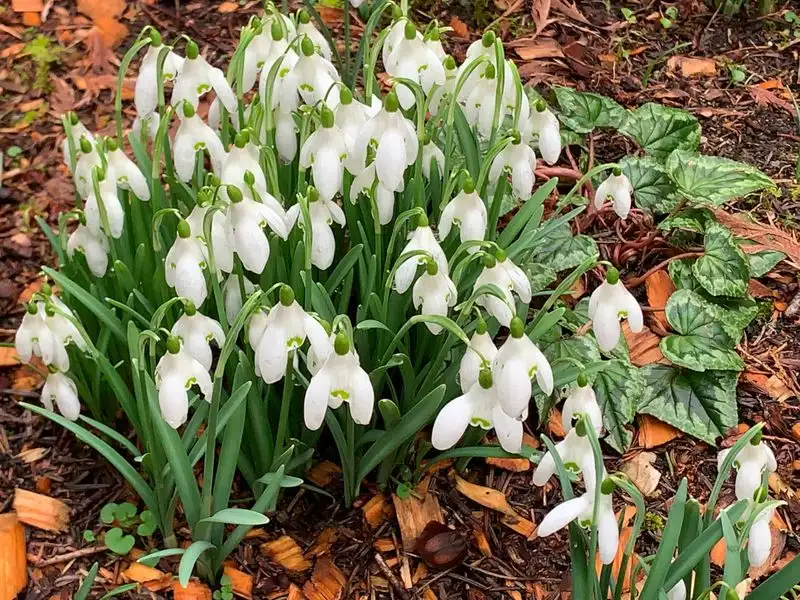
These dainty white blossoms are often the first signs of spring, bravely emerging through the melting snow. Their resilience is a hopeful reminder that warmer days are ahead. Snowdrops thrive in shaded areas, making them ideal for woodland gardens or under deciduous trees where they can soak up early spring sunlight before the leaves fill in. Plant them in well-drained soil for best results.
Snowdrops are more than just pretty faces; they are versatile and low-maintenance. Their ability to multiply naturally means that a small initial planting can lead to a carpet of blooms over time.
Crocuses
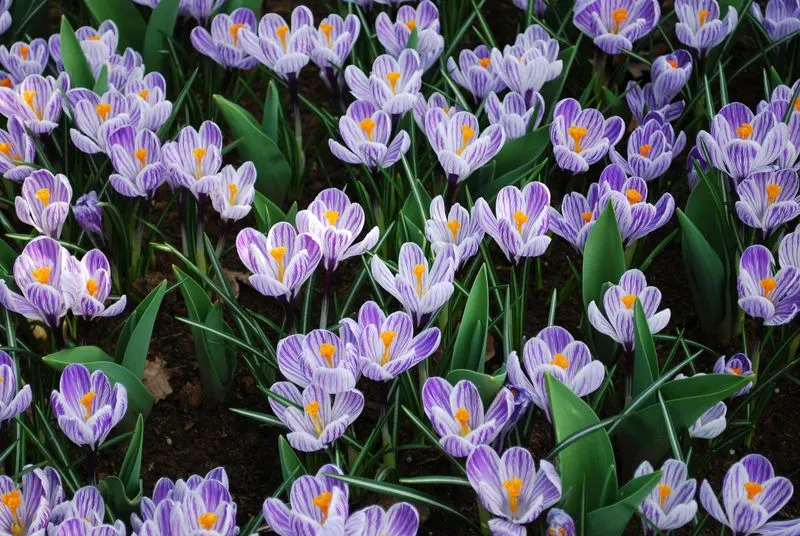
Crocuses are the bold harbingers of spring, announcing the season with vivid splashes of color. These cheerful flowers can thrive in a variety of soil types, making them a versatile addition to any garden. Plant them in drifts for a naturalized look or in clusters for a more dramatic impact.
They are particularly attractive to early pollinators, providing a much-needed source of nectar. Their compact size makes them perfect for rock gardens or borders, where they can create a stunning display. With minimal care, crocuses will return year after year.
Daffodils
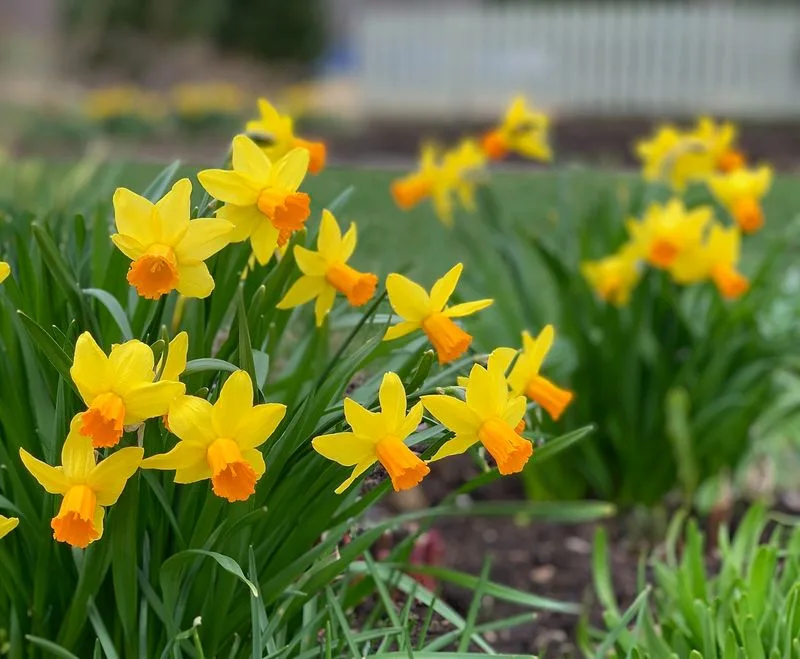
With their sunny disposition and trumpet-shaped blooms, daffodils are the quintessential spring flower. They are a versatile choice for gardens, thriving in both full sun and partial shade. Daffodils are deer-resistant, making them a practical option for Idaho’s wildlife-rich areas.
These perennials are especially charming when planted in large groups, creating a sea of yellow that can brighten even the dreariest spring days. Daffodils require minimal maintenance, and their bulbs multiply over time, ensuring a more bountiful display each year.
Tulips
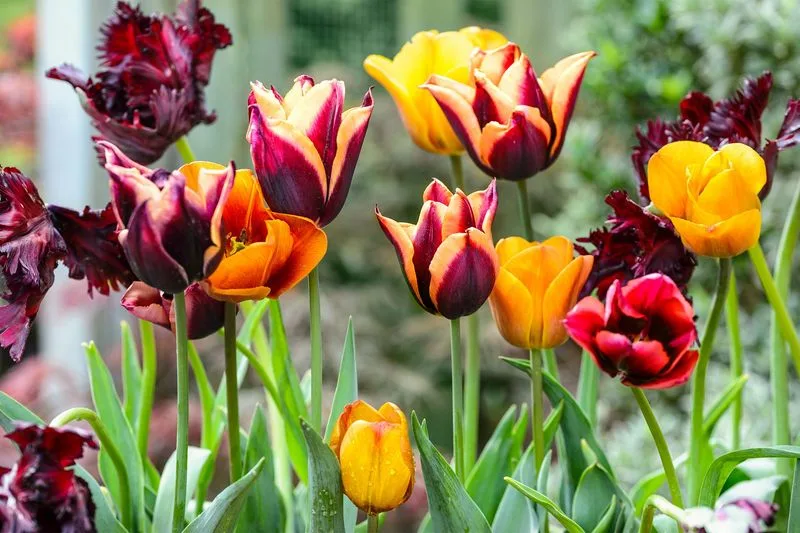
Tulips bring a touch of elegance and a burst of color to any spring garden. They are available in a wide range of colors and varieties, allowing for creative plantings that can reflect personal style. Tulips perform best in well-drained soil and full sun, rewarding gardeners with stunning blooms.
Plant them in clusters for maximum visual impact. Tulips are also excellent for cutting gardens, bringing their beauty indoors. While they are relatively easy to care for, be mindful of pests and diseases that can affect their growth. Regular maintenance will keep them thriving.
Hyacinths
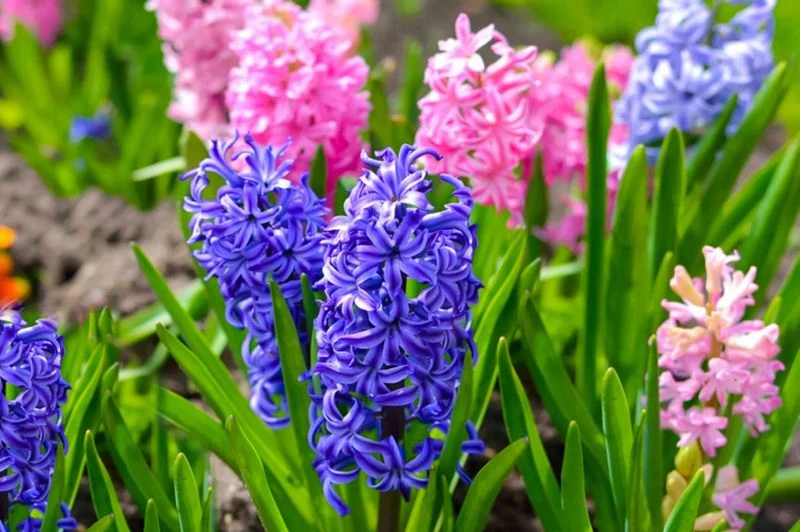
Known for their intoxicating fragrance, hyacinths are a sensory delight in any garden. Their dense, spike-like blooms come in a range of colors, often with a glossy finish that catches the eye. Hyacinths thrive in well-drained soil and full to partial sun, making them adaptable to different garden conditions.
These flowers are perfect for adding height and texture to spring displays. Their strong scent makes them ideal for walkways or entrances, where they can be fully appreciated. Hyacinths require some care, such as deadheading, to ensure robust blooms in the following seasons.
Primroses
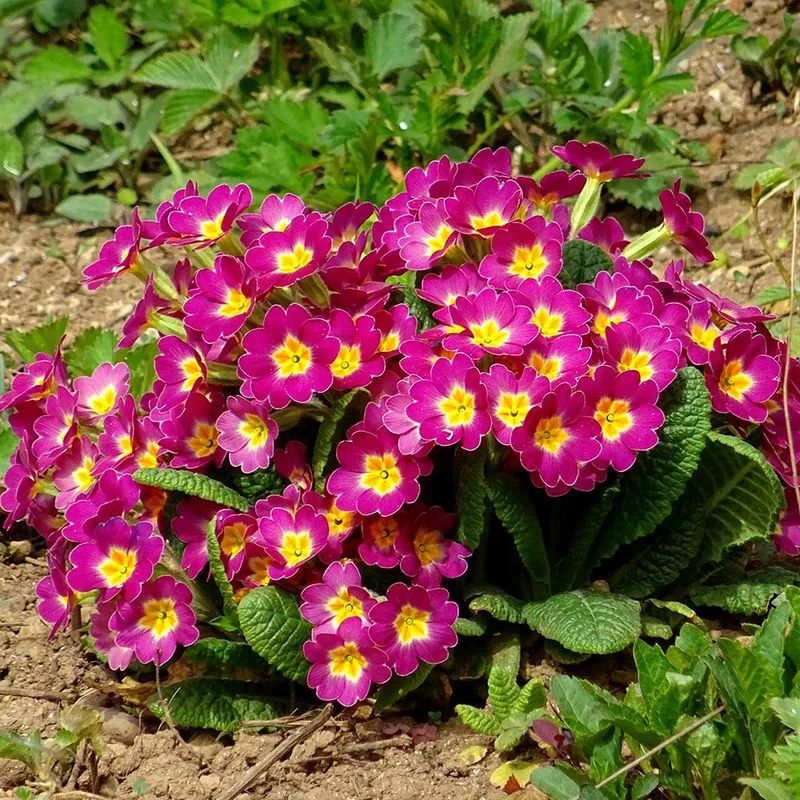
Primroses offer a delightful burst of color with their cheerful blooms in shades of pink, yellow, and purple. These hardy perennials are perfect for Idaho’s variable spring weather, as they thrive in both sun and shade. Plant them in groups to create eye-catching patches of color throughout the garden.
Primroses are low-maintenance and can naturalize over time, providing an increasingly lush display with each passing year. Their compact form makes them ideal for borders and containers, where they can add vibrancy to any space.
Pansies
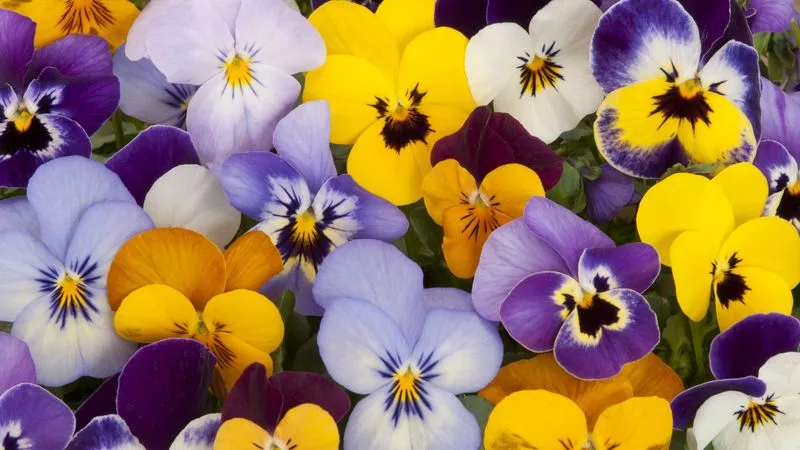
Pansies are known for their charming “faces” and come in a variety of colors, making them a versatile choice for early spring planting. They are particularly suited to cooler climates, thriving in the mild temperatures of Idaho’s spring. Pansies perform well in containers, hanging baskets, and garden beds alike.
These flowers are not only decorative but also edible, adding a pop of color to salads and desserts. Pansies require regular watering and deadheading to promote continuous blooms, but their vibrant presence is well worth the effort. They’re perfect for adding a playful touch to any garden.
Bleeding Hearts
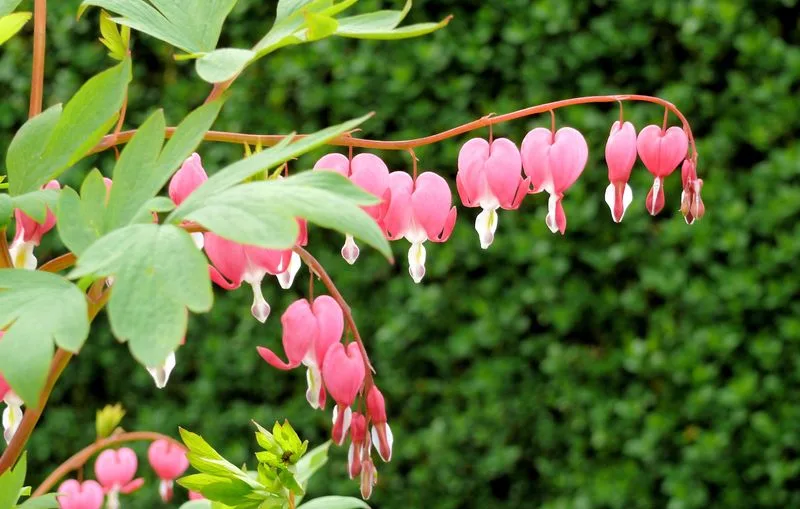
The distinctive heart-shaped flowers of bleeding hearts make them a captivating addition to any spring garden. These perennials prefer shady spots and well-drained soil, making them ideal for woodland gardens or shaded borders. With their graceful, arching stems, they add an element of elegance.
Bleeding hearts are not only visually striking but also low-maintenance. Once established, they require minimal care, making them a favorite among busy gardeners. Their unique blooms attract admiration and can be a conversation starter. Pair them with ferns or hostas for a lush, leafy contrast.
Hellebores
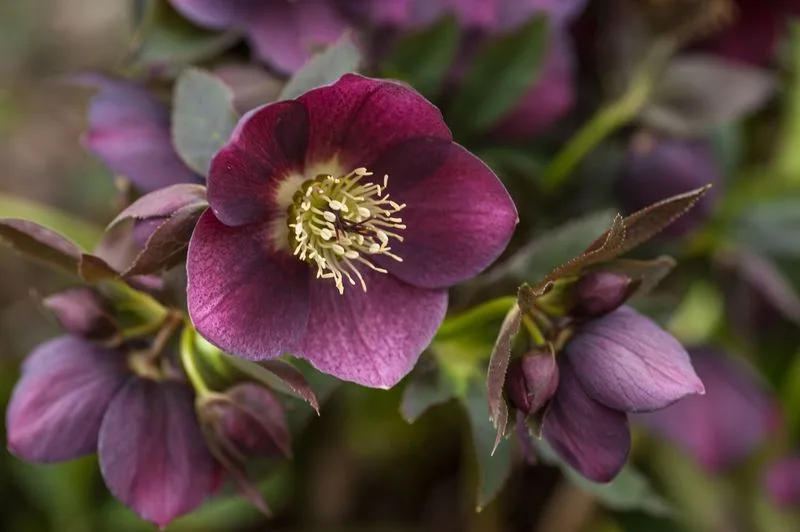
Hellebores, often called Lenten roses, are among the first perennials to bloom in spring. Their nodding flowers are available in an array of colors, from soft pastels to deep purples, offering a sophisticated touch to gardens. Hellebores thrive in partial shade and well-drained soil, making them suitable for woodland settings.
These robust plants are deer-resistant and drought-tolerant once established, providing a reliable splash of color year after year. Their evergreen foliage adds interest even when not in bloom. Consider planting hellebores in groups for a captivating display that lasts throughout the season.
Forsythia
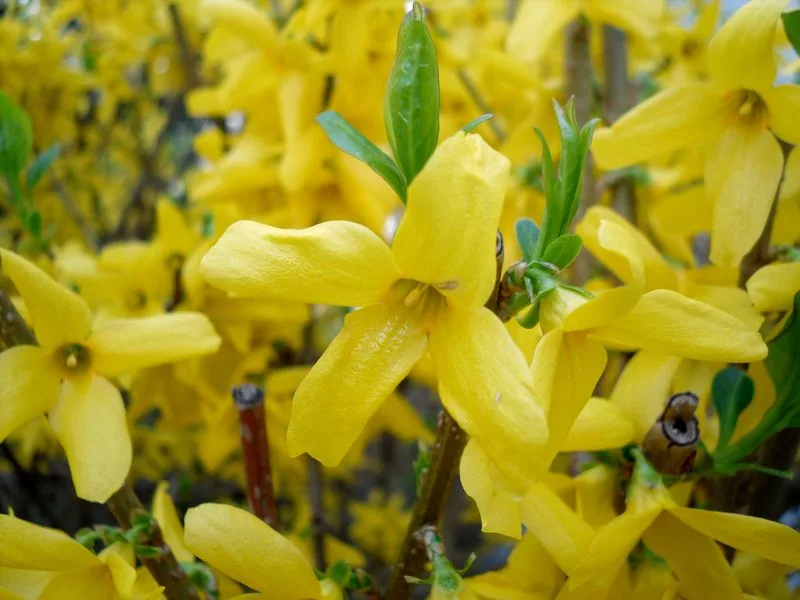
Forsythia bushes are renowned for their vivid yellow blooms that herald the arrival of spring. These hardy shrubs are easy to grow and can thrive in a range of soil types, making them a versatile choice for Idaho gardens. Forsythias do best in full sun, where they can showcase their vibrant color.
Regular pruning will encourage denser growth and more abundant flowering. Forsythias are perfect for creating hedges or borders, offering a burst of color that can define a space. Their early bloom time ensures they’re among the first to brighten the garden.
Peonies
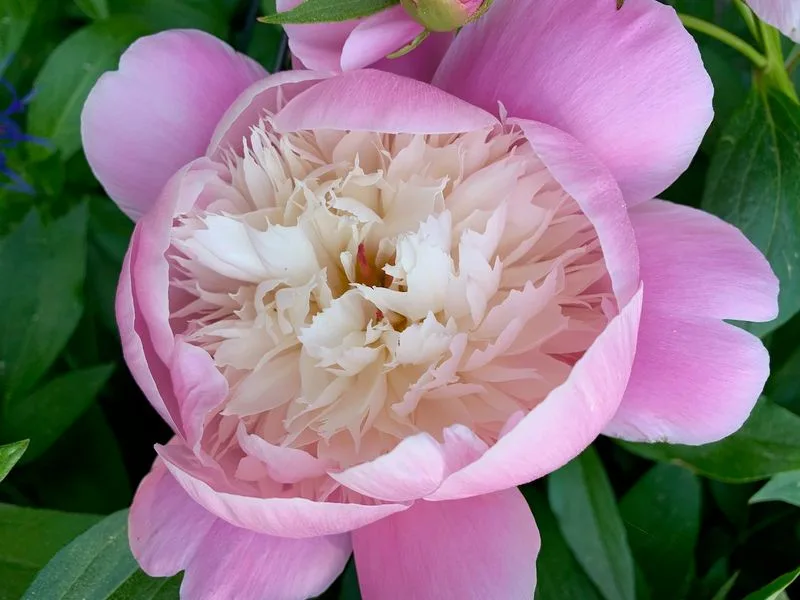
Peonies are beloved for their large, fragrant blooms that add a touch of romance to any garden. These perennials are long-lived and can thrive in Idaho’s diverse climates, preferring full sun and well-drained soil. Their lush, double blooms make a dramatic statement in borders and flower beds.
Peonies require minimal maintenance once established, though staking may be necessary to support their heavy flower heads. They are also excellent for cut flower arrangements, bringing their beauty indoors. With proper care, peonies can become a cherished focal point in any spring landscape.
Lilacs
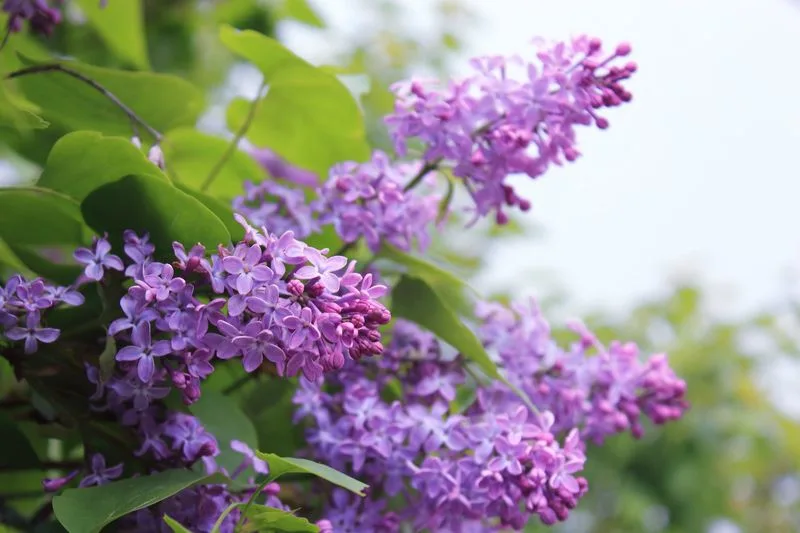
The fragrant blooms of lilacs are a cherished sign of spring. These hardy shrubs are well-suited to Idaho’s climate, thriving in full sun and well-drained soil. Lilacs are known for their longevity, often blooming for generations in the same location.
These plants require regular pruning to maintain their shape and promote vigorous flowering. Lilacs make excellent hedges or stand-alone specimens, providing a fragrant backdrop to any garden. Their blossoms are not only beautiful but also attract pollinators, adding vitality and movement to the spring garden.
Magnolias
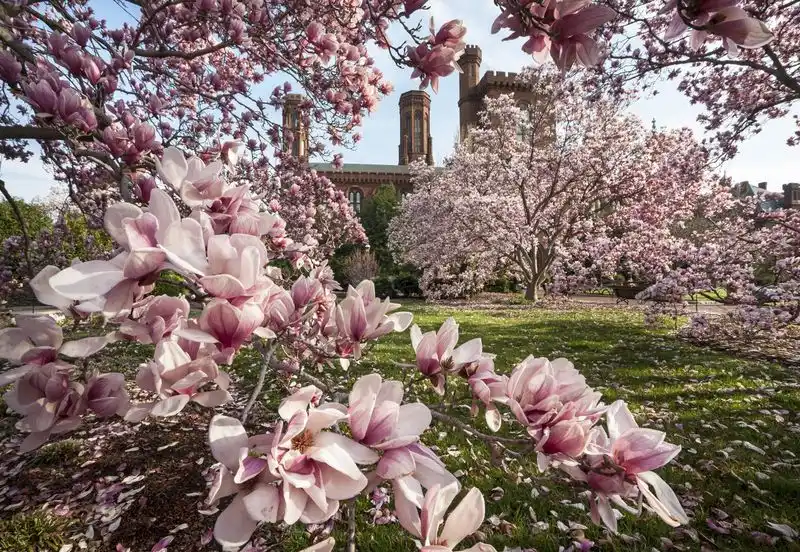
Magnolias are magnificent trees known for their large, showy blossoms. Their dramatic flowers can transform any landscape into a spring paradise. Magnolias prefer well-drained soil and full sun, where they can develop their stunning blooms.
These trees are a statement piece in any garden, providing structure and beauty. Magnolias require little maintenance once established, though young trees may need protection from harsh weather. Their flowers are not only visually stunning but also attract a range of pollinators, enhancing the biodiversity of your garden.
Brunnera
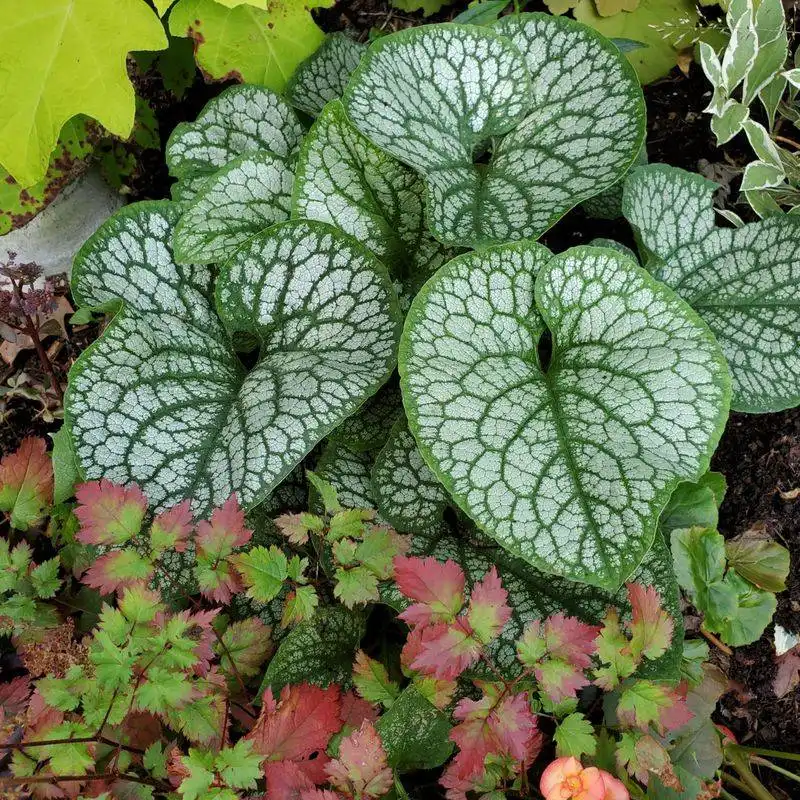
Brunnera, with its delicate blue flowers and lush foliage, offers a refreshing hint of color in shaded areas. Known as Siberian bugloss, this perennial is ideal for Idaho gardeners looking for low-maintenance yet striking spring blooms.
Brunnera thrives in moist, well-drained soil and can tolerate a variety of light conditions, though it excels in partial to full shade. Its heart-shaped leaves add texture and interest, making it a perfect companion for hostas or ferns. Once established, brunnera requires minimal care, providing enduring beauty with little effort.
Pulmonaria
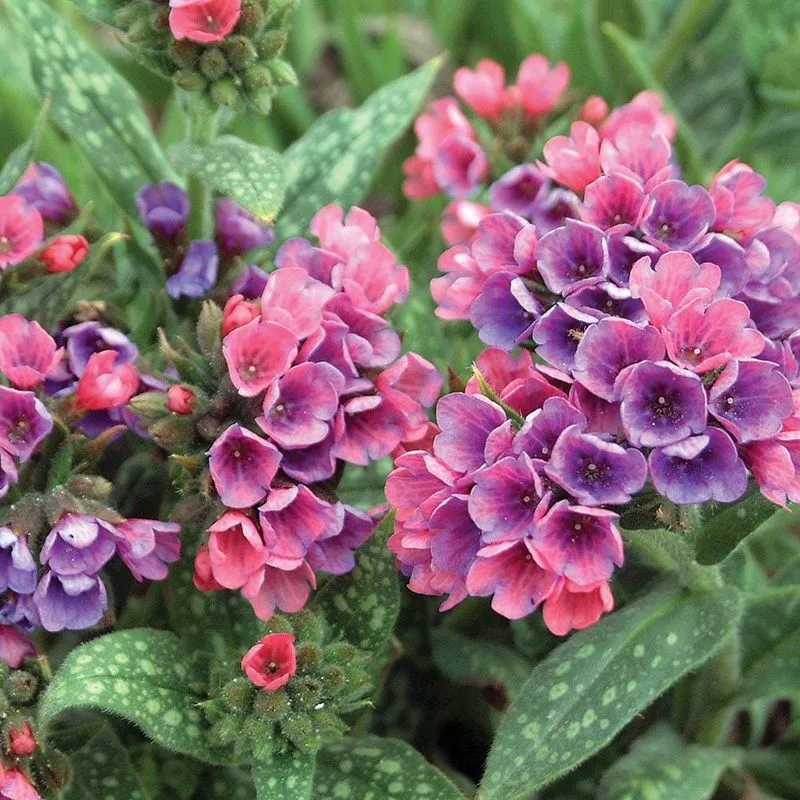
Pulmonaria, often referred to as lungwort, is a delightful addition to any spring garden. Its spotted leaves and tubular flowers provide a unique aesthetic that stands out. Pulmonaria prefers shady locations and moist, well-drained soil, making it suitable for woodland gardens.
This plant is not only attractive but also hardy, withstanding a range of temperatures typical of Idaho springs. It’s a favorite among pollinators, ensuring a lively garden scene. Pulmonaria requires minimal maintenance, though occasional deadheading will encourage a tidier appearance and more prolific blooming.
Muscari
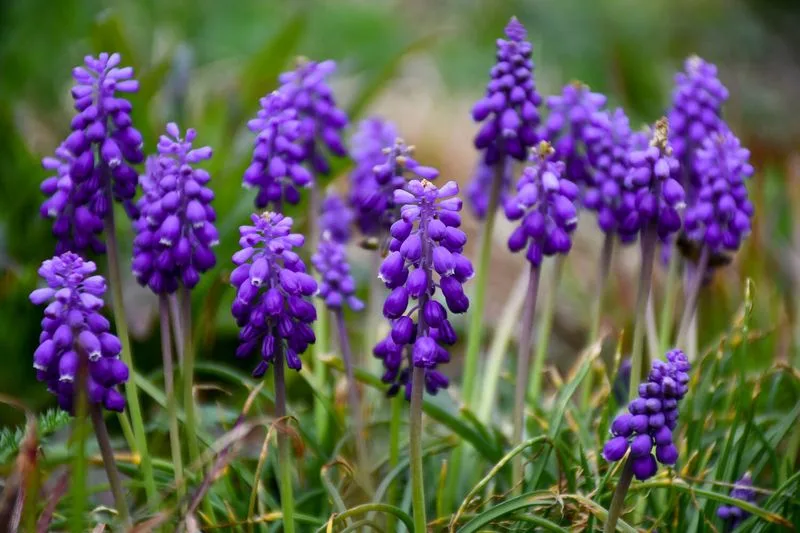
Muscari, commonly known as grape hyacinth, is a charming bulb plant that brings a pop of color to spring gardens. Its bright blue blooms resemble clusters of tiny grapes, adding a playful touch to borders and rock gardens.
Muscari is easy to grow and thrives in well-drained soil and full to partial sun. Once planted, it requires little care and will naturalize over time, increasing its presence with each passing year. Muscari’s small size makes it ideal for interplanting with larger bulbs, creating a layered and textured garden display.
Virginia Bluebells
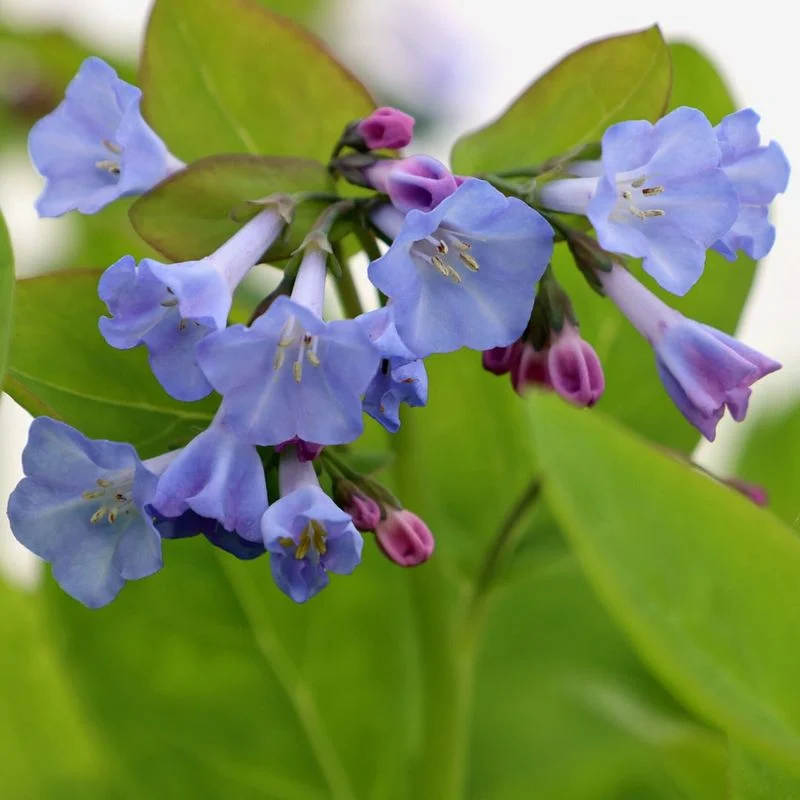
Virginia bluebells are a glorious sight in spring, with their nodding bell-shaped flowers in shades of blue and pink. These perennials thrive in moist, well-drained soil and are perfect for woodland gardens or shaded borders.
Bluebells are known for their ability to create a sea of color as they naturalize, spreading to form dense colonies. This plant is low-maintenance and attracts a variety of pollinators, adding life and movement to the garden. Virginia bluebells pair beautifully with ferns and hostas, providing a contrasting texture that enhances their vibrant blooms.
Candytuft
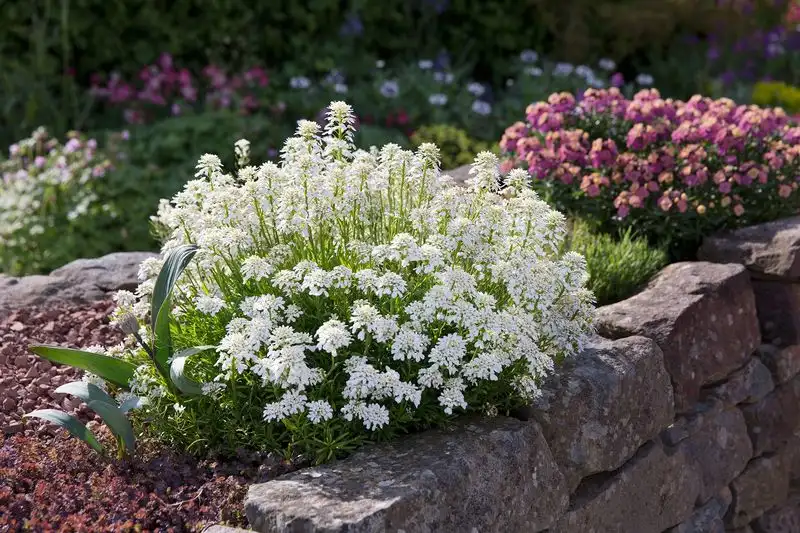
Candytuft is a charming evergreen perennial that offers a profusion of white blooms in early spring. Its compact form makes it ideal for rock gardens, borders, or as ground cover. Candytuft thrives in well-drained soil and full sun, where it can showcase its dense floral display.
This plant is not only beautiful but also resilient, requiring minimal care once established. Regular pruning after flowering will encourage a bushier growth habit and more abundant blooms in future seasons. Candytuft’s pristine appearance makes it a versatile and reliable choice for Idaho gardeners.
Corydalis
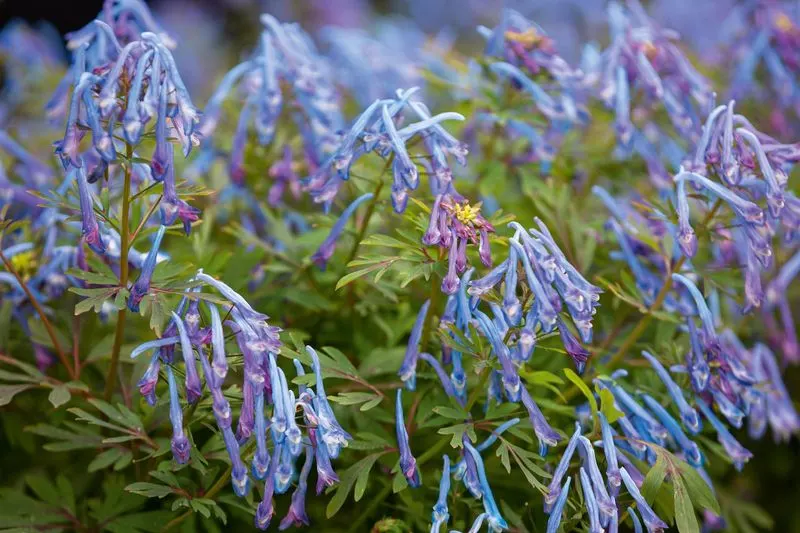
Corydalis is a delicate perennial known for its intricate, fern-like foliage and tubular flowers in shades of blue, purple, and yellow. This plant thrives in partial shade and well-drained soil, making it perfect for woodland gardens.
Corydalis is particularly valued for its long bloom period and ability to self-seed, creating a naturalized effect over time. Its soft, airy texture adds interest and depth to garden compositions. Pair corydalis with contrasting foliage plants like hostas for a dynamic display. Minimal care is required, making it a favorite among low-maintenance gardeners.
Trillium
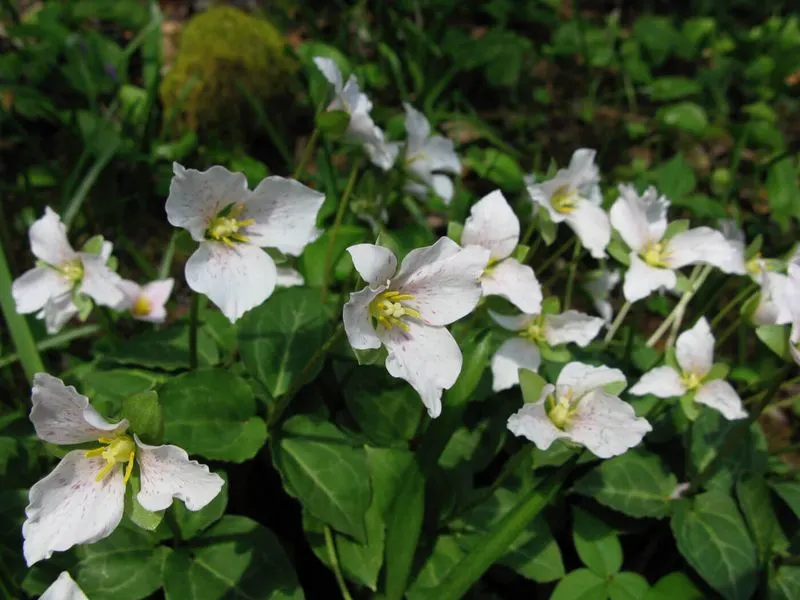
Trillium, with its distinctive three-petaled flowers, is a woodland gem that brings understated elegance to spring gardens. This perennial prefers shaded areas and rich, well-drained soil, thriving under the canopy of trees.
Trilliums are slow-growing but reward patience with their unique and striking blooms. They are a symbol of spring’s resurgence and can form impressive colonies over time. Trilliums require little maintenance, making them a thoughtful choice for naturalistic garden settings. Their subtle beauty is best appreciated up close, inviting a closer look at the intricate details of their flowers.
Glory of the Snow
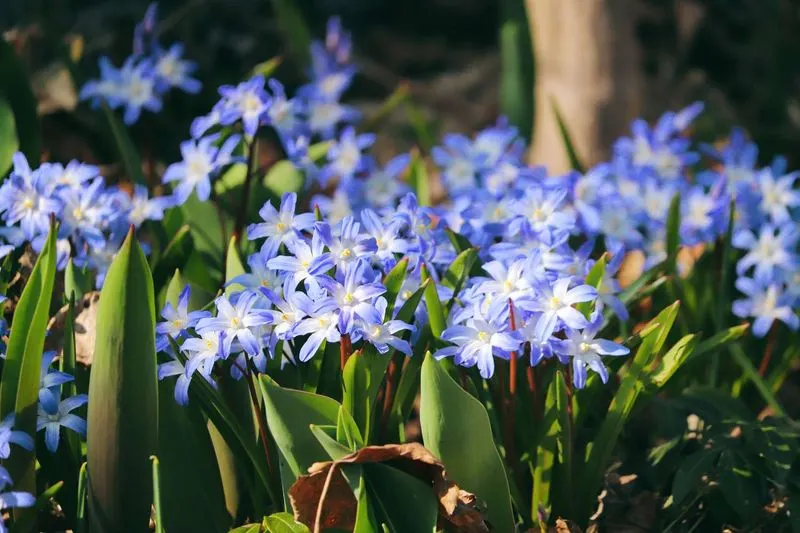
Glory of the snow is a captivating bulb plant that heralds the arrival of spring with its bright blue flowers. These blooms often appear while patches of snow still linger, adding a touch of color to early spring landscapes.
This plant thrives in well-drained soil and full sun, making it suitable for rock gardens, borders, or naturalized areas. Glory of the snow requires little care and will multiply over time, creating a dense carpet of blooms. Its resilience and early bloom time make it a valuable addition to any Idaho garden, ensuring vibrant color as the seasons change.
Lenten Rose
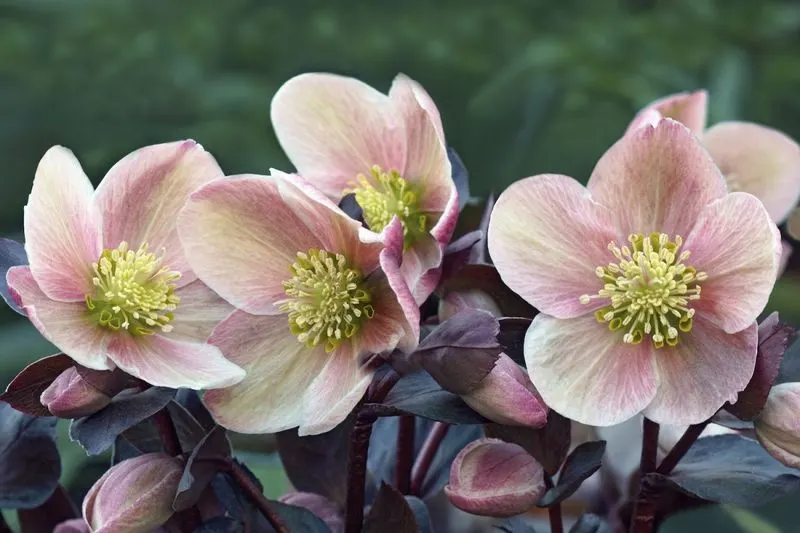
The Lenten rose, or hellebore, is a harbinger of spring, with its elegant blooms adding a touch of sophistication to gardens. These flowers thrive in partial to full shade, preferring well-drained soil.
Lenten roses are exceptionally hardy, withstanding the variable temperatures of early spring in Idaho. Their long-lasting blooms appear in a range of colors, from whites and pinks to deeper hues. These plants are low-maintenance, requiring little more than occasional pruning to keep them looking their best. They’re a favorite for shaded borders, offering beauty and resilience in equal measure.
Iris Reticulata

Iris reticulata is a petite iris species that makes a big impact with its vibrant purple blooms and striking yellow markings. These bulbs are among the first to emerge in spring, thriving in well-drained soil and sunny locations.
Their compact size makes them ideal for rock gardens, borders, or containers, where they can be admired up close. Iris reticulata is low-maintenance, requiring minimal care once planted. Their early bloom time and distinct colors add a splash of brightness to gardens just waking up from winter. Pair them with other early bloomers for a dynamic display.

